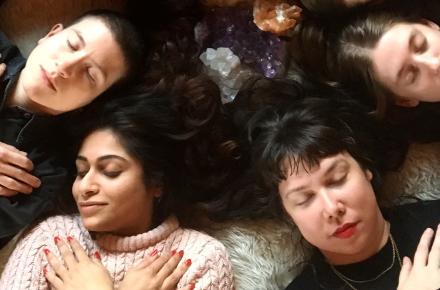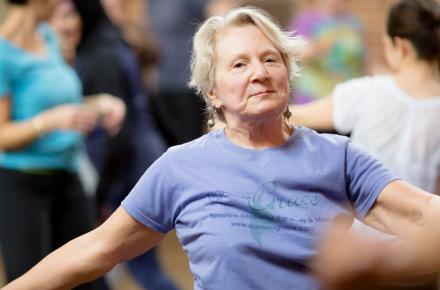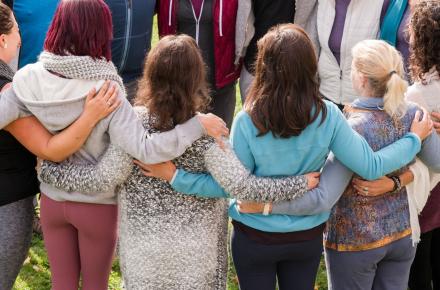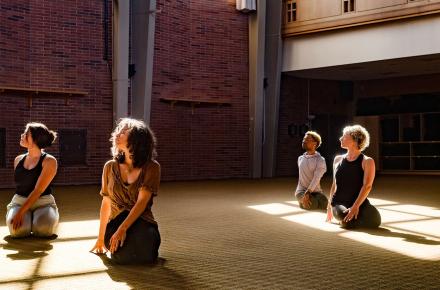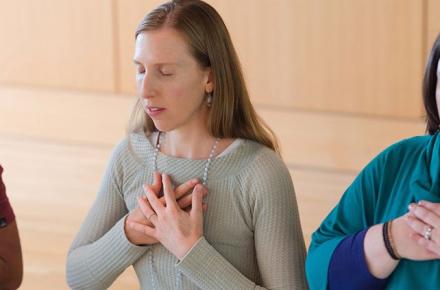The Yoga of Knitting: Peace in Every Stitch

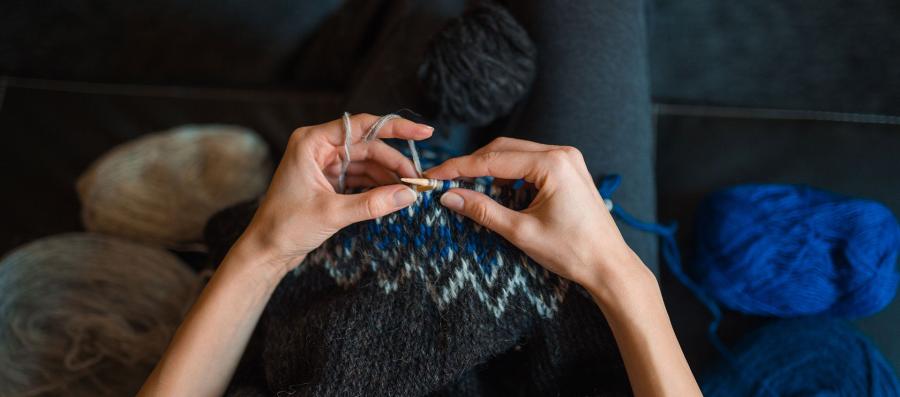
It has been a busy—bordering on hectic—day: teaching multiple yoga classes, sitting in meetings, answering emails, running errands, and doing household chores. Feeling worn and a bit frazzled, I sit down and pick up my knitting. I begin to knit and, with every stitch, I feel my body relax, my breath become even, and my heartbeat slow down. My attention is drawn to the rhythm of my hands moving the yarn and needles in a rhythmic pattern. Eventually, the outside world fades into the background, and I can feel myself slip into my sacred space, a peaceful place within—the same space that a yoga class or meditation practice takes me to. Whether I am there for 10 minutes or two hours, when I return, I feel revitalized, calm, centered, and grounded. It's been said that practices like yoga and meditation can warp time, making it feel longer or shorter. When I’m absorbed in knitting, I enter an altered state in which time is suspended and I forget about the stress of my to-do list, which is always time oriented.
For me, knitting is one of the most powerful and effective meditation practices. Meditation and mindfulness are about paying attention to what is happening in the present moment, with a sense of curiosity and compassion. Knitting offers that perfect present-moment focal point. Sometimes my pattern is very simple and I am able to "zen out,” just focusing on the rhythm of the movement—making knitting feel like a meditation in motion. Other times, the pattern is very complex, requiring all of my focused attention to count stitches and toggle between techniques.
Along with being a portable practice that can go anywhere I go, and a practical practice that eventually produces something beautiful and useful, knitting has significant health benefits. Take, for example, the rhythmic nature of knitting: Research by Barry Jacobs of Princeton University has shown that repetitive movement in animals enhances the release of serotonin, a natural mood stabilizer that supports better sleeping, eating, and digestion, and helps reduce depression and regulate anxiety. Herbert Benson, author of The Relaxation Response and a pioneer in mind/body medicine, says that repetitive actions, such as those we perform when knitting, can induce a relaxed state like the state associated with meditation and yoga. Science now shows that such practices can lower heart rate and blood pressure, reduce cortisol levels, and relieve conditions like insomnia.
Knitting also involves following and recognizing patterns, learning new stitches, using both hands, and math, which helps knitters improve fine motor skills while also keeping the mind active and engaged. This is good news for those who are looking to keep their mind sharp as well as their hands busy. Knitting has such value for brain development that Waldorf Schools teach children to knit before teaching them to read, in the belief that knitting develops dexterity, focus and rudimentary arithmetic.
And the benefits don’t stop there. Many people find that keeping their hands busy with knitting has helped them to stop smoking or deal with eating disorders; a study of older adults (ages 70 to 89) found that knitting was among the activities that reduced cognitive impairment. Knitters report that it boosts their self-esteem, increases their personal and social well-being, gives them a sense of purpose, enables them to support those in need, connects them to their past and heritage, and creates the opportunity to leave a legacy.
The truth is, no matter why you knit, the benefits are numerous—and they all lead to a place of peace.


























